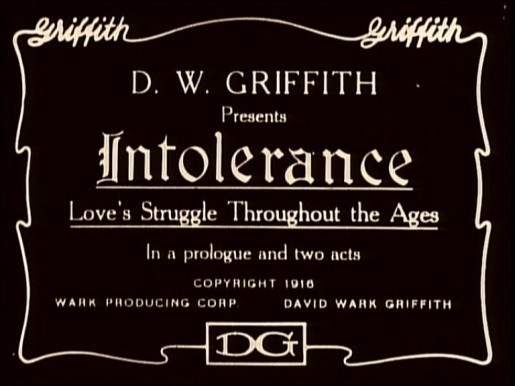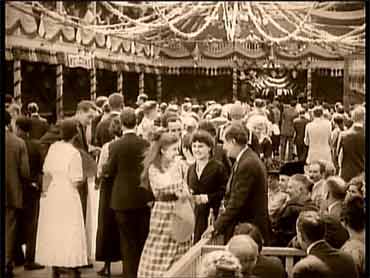
In order to enjoy and appreciate Intolerance you have to watch it the
way you read Dickens — submitting to its rhythms, surrendering to its
asides and narrative diversions. You simply can’t be too
impatient to find out what happens next in the story (or
stories.) Dickens and Griffith are more interested in how things
happen, where things happen, to whom things happen. There’s no
shortage of fascinating incident in either artist’s work, and much of
it is spectacular — but sometimes the incidents are very small indeed,
and no less fascinating for that.
I’ve seen Intolerance many times, and I find I remember small gestures and
glances, brief passages of body language with the same vividness that I
remember great lines of dialogue from talking films. The flirty
and then dismissive looks the girl outside the dance hall gives the
mill owner Jenkins who’s come to spy on his workers make for an
indelible moment — involving a bit player we never see again.
The Mountain Girl’s postures of energy and defiance look in retrospect
like a primer on flapper attitude, years before the flapper even
existed.
It takes Griffith over half an hour to introduce us to all four of the time
periods covered in the film. We start in the modern story,
proceed to the time of Jesus, then to 16th-Century France — then back
to the modern story before seeing the walls of Babylon for the first
time.
Almost every image in this first half hour is stunning, worth studying for its
dynamic composition involving movement and deep space. The illusion of
depth draws us emotionally into the film just as surely as the
interwoven narratives and the performances.

This effect is most powerful on a big screen, of course, but it’s effective enough on
a decent-sized TV monitor. When you consider a video screen’s
tendency to flatten any image, it’s all the more amazing that
Griffith’s images retain their stereometric brilliance in that format.
One great virtue of the DVD format is that it allows one to watch (or, one hopes,
re-watch) a film like Intolerance in segments — which is the way one
reads those long Victorian novels originally published serially.
The film reveals much when experienced this way. There’s almost
no chance in any continuous viewing of the three-plus hours of Intolerance that one could sustain the intensity of attention needed
to fully absorb its torrent of beautiful images in detail.
If you have Intolerance on DVD, go watch just its first half hour — to the end
of the first Babylonian segment. There’s enough cinematic
brilliance in that half hour to justify, by itself, the whole medium of
movies.
[If you don’t have Intolerance on DVD rush out and get it immediately. The
Kino edition is generally considered to have the best image quality.]
